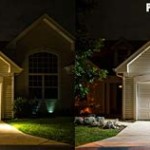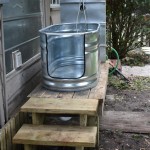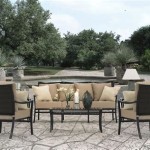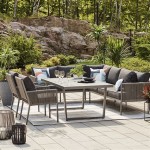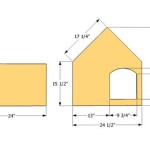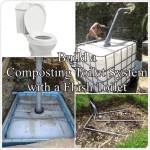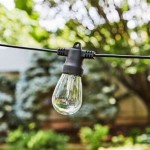Kids Outdoor Play Area Decorating Ideas: Creating Engaging and Safe Spaces
Outdoor play areas offer children invaluable opportunities for physical activity, social interaction, and imaginative exploration. The design and decoration of these spaces are crucial to fostering a stimulating and safe environment that encourages children to engage in active play. Thoughtful planning, incorporating child-friendly elements, and prioritizing safety are essential for creating a successful outdoor play area. This article will explore various decorating ideas that can transform a backyard or community space into an exciting and functional playground for children.
Designing for Different Age Groups and Interests
When planning an outdoor play area, it is paramount to consider the age range and developmental needs of the children who will be using it. A play area designed for toddlers will differ significantly from one designed for older children. Toddlers require spaces that promote crawling, walking, and sensory exploration, while older children need areas that facilitate running, jumping, climbing, and more complex forms of play.
For toddlers (1-3 years old), consider incorporating: * Soft surfaces like padded mats or artificial turf to cushion falls. * Low-to-the-ground structures like tunnels, small slides, and climbing frames that are easy to navigate. * Sensory play elements such as sandboxes, water tables, and textured surfaces to stimulate tactile exploration. * Bright and engaging colors to capture their attention and create a visually appealing environment.
For preschoolers (3-5 years old), consider incorporating: * Larger climbing structures with low platforms and gentle slides. * Swings and seesaws that promote balance and coordination. * Areas for imaginative play, such as playhouses, kitchens, or tool benches. * Open spaces for running and playing games.
For school-aged children (6-12 years old), consider incorporating: * More challenging climbing structures with higher platforms and steeper slides. * Rope courses, monkey bars, and other equipment that tests strength and agility. * Sports areas for basketball, soccer, or other games. * Areas for creative expression, such as art easels or performance stages.
Beyond age, it is important to consider the children's interests. Does the child enjoy building things? A construction zone with large blocks and tools (appropriate for their age, of course) might be a good fit. Do they like to create stories and act them out? A stage area, or even just a designated space for pretend play with props, can be effective. Tailoring the play area to the unique interests and preferences of the children will increase their engagement and enjoyment.
Material Selection and Safety Considerations
The materials used in the construction and decoration of an outdoor play area should be carefully selected to ensure both safety and durability. Natural materials such as wood, stone, and sand can create a visually appealing and tactilely stimulating environment, but they must be properly treated and maintained to prevent splinters, slivers, or other hazards. Synthetic materials such as plastic, rubber, and artificial turf offer greater durability and ease of maintenance, but they should be chosen carefully to ensure that they are non-toxic and free of harmful chemicals.
Surfacing is a crucial element of play area safety. Impact-absorbing surfaces such as rubber mulch, wood chips, or poured-in-place rubber can help to prevent injuries from falls. The depth and quality of the surfacing material should be appropriate for the height of the play equipment. Regular inspection and maintenance of the surfacing are essential to ensure its effectiveness. Free Fall Height (FFH) is used to determine the depth of the surfacing material which should be considered by the designer/installer. Different materials have different testing reports which you can obtain prior installation.
When selecting playground equipment, it is important to choose products that meet safety standards set by organizations such as the American Society for Testing and Materials (ASTM). The equipment should be properly installed and regularly inspected to ensure that it is in good working order. Any sharp edges, protruding hardware, or other potential hazards should be addressed immediately.
Other safety considerations include: * Providing adequate shade to protect children from the sun. This can be achieved through the use of trees, shade structures, or umbrellas. * Ensuring that the play area is well-drained to prevent standing water and slippery surfaces. * Establishing clear boundaries to prevent children from wandering into unsafe areas. * Providing adequate supervision to monitor children's play and address any safety concerns.
Finally, consider the longevity of the materials. How will they weather over time? What maintenance will be required? Choosing materials that are resistant to rot, fading, and other forms of damage will ensure that the play area remains safe and attractive for years to come.
Incorporating Creative and Stimulating Elements
Beyond safety and functionality, the decoration of an outdoor play area can play a significant role in stimulating children's imagination and creativity. Incorporating bright colors, playful patterns, and interesting textures can create a visually appealing and engaging environment.
Consider incorporating the following elements to enhance the play area's aesthetic appeal: * Painting play structures with vibrant colors and whimsical designs. * Adding murals or other artwork to walls or fences. * Using colorful paving stones or tiles to create patterns on the ground. * Planting flowers and shrubs to add natural beauty.
In addition to visual elements, consider incorporating sensory play elements to stimulate children's tactile, auditory, and olfactory senses. These may include: * A sandbox filled with sand and shovels. * A water table with cups, funnels, and other water toys. * A musical instrument area with drums, xylophones, and other instruments. * A garden with fragrant herbs and flowers.
Finally, consider incorporating elements that encourage imaginative play. These may include: * A playhouse or fort where children can pretend to be kings, queens, or explorers. * A stage where children can put on plays or concerts. * A dress-up area with costumes and props. * A chalkboard or whiteboard where children can draw and write.
Integrating nature into the play area design is also highly beneficial. Planting trees, shrubs, and flowers not only adds aesthetic appeal but also provides shade, creates a sense of tranquility, and offers opportunities for children to learn about the natural world. Consider creating a small garden where children can plant seeds, water plants, and observe insects. A bird feeder can also attract birds to the play area, providing opportunities for children to learn about different bird species.
Furthermore, consider themed play areas. A pirate ship theme with a climbing structure modeled after a ship, a sandy "beach" area, and a treasure chest can spark children's imaginations. Likewise, a jungle theme with lush greenery, animal figurines, and a rope bridge can transport children to an exotic environment. Themed play areas can provide a focal point for imaginative play and enhance the overall appeal of the outdoor space.
Consider using recycled materials when decorating the play area – transforming old tires into swings or flower planters. This not only reduces waste but also provides a unique and creative element to the design while teaching children about sustainability.
Remember, consistency is essential. It doesn't have to be perfect, but consistent maintenance is vital to keep the area safe and attractive. This includes regular cleaning, repairing damaged equipment, and replacing worn-out materials. A well-maintained play area will provide children with a safe and stimulating environment for years to come.

Pin On Outdoor Spaces

16 Outdoor Play Areas For Kids Backyard Playground Ideas

46 Creative And Fun Outdoor Kids Play Areas Digsdigs

10 Gorgeous Kids Play Area Designs In Your Backyard Freshouz Home Architecture Decor Kid Friendly

30 Creative And Cool Outdoor Kids Play Areas Shelterness

30 Creative And Cool Outdoor Kids Play Areas Shelterness

Outdoor Kids Play Area Ideas Toddler For Jenna Yard Designs Decorating Backyard Playground

23 Awesome Kids Garden Ideas With Outdoor Play Areas Homemydesign

Backyard Playground At Home How To Build It

These 12 Creative Outdoor Play Spaces Will Make You Want To Be A Kid Again Kids Area Backyard

